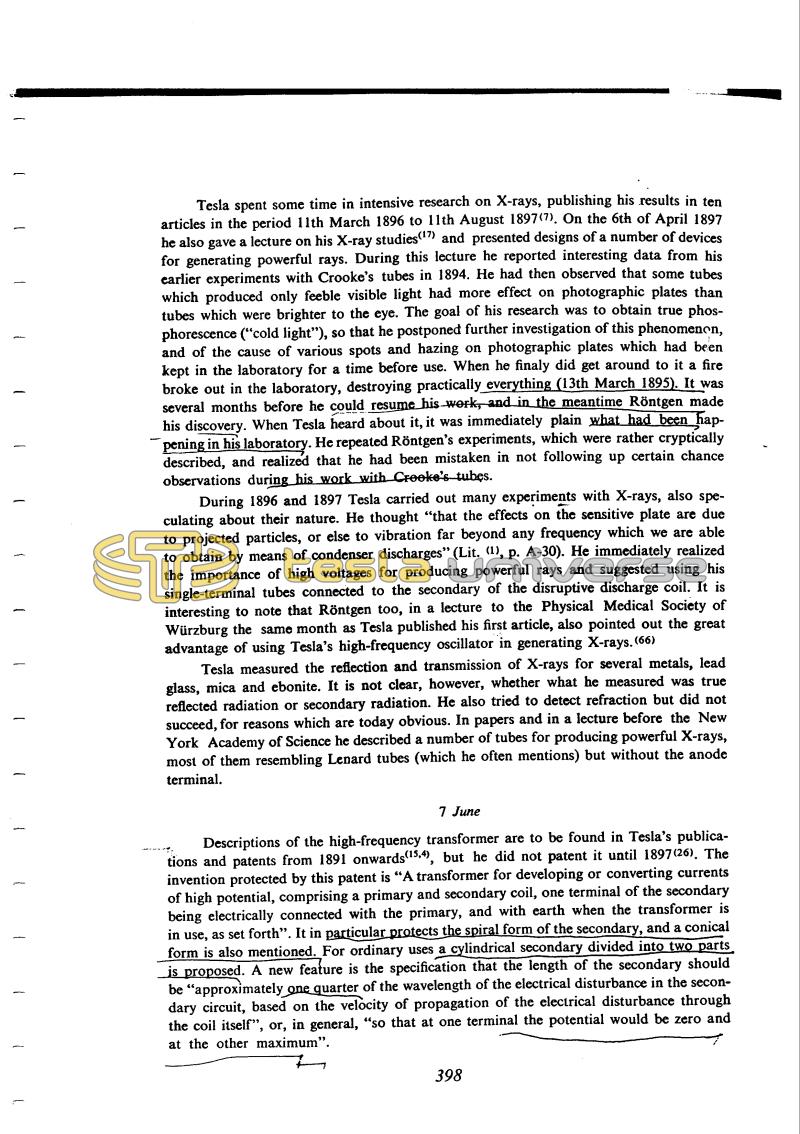
Nikola Tesla Books
398
N. Tesla, LECTURES, PATENTS, ARTICLES, published by Nikola Tesla Museum, Belgrade, 1956 (from now on: Tesla), "The transmission of electric energy without wires", Electr. World and Eng. March 5, 1904, A-153.
Tesla: "Experiments with alternate currents of very high frequency and their application to methods of artificial illumination", a lecture delivered before the AIEE, May 20, 1891, L-15.
Tesla: "On Roentgen rays", El. Rev. March 11, 1896, A-27, A-32
"On reflected Roentgen rays, El. Rev. April 1, 1896, A-34
"On Roentgen radiations", El. Rev. April 8, 1896, A-39
"Roentgen ray investigations", El. Rev. April 22, 1896, A-43
"An interesting feature of X-ray radiations", El. Rev. July 8, 1896, A-49
"Roentgen rays or streams", El. Rev. August 12, 1896, A-51
"On the Roentgen stream", El. Rev. Dec. 1, 1896, A-56
"On the hurtful actions of Lenard and Roentgen tubes", El. Rev. May 5, 1897, A-62
"On the source of Roentgen rays and the practical construction and safe operation of Lenard tubes", El. Rev. Aug. 11, 1897, A-69.
Tesla: "System of electric lighting", U.S. Patent 454 622, June 23, 1891, Appl. Apr. 25, 1891, P-208.
"Electric incandescent lamp", U.S. Patent 455 069, June 30, 1891, Appl. May 14, 1891, P-213.
Tesla N. "The stream of Lenard and Roentgen and novel apparatus for their production". Lecture before New York Academy of Science, Apr. 6, 1897 (Nikola Tesla Museum, Belgrade)
Tesla: "Electrical transformer", U.S. Patent, 593 138, Nov. 2, 1897, Appl. March 20, 1897, P-252
Bowers B. X-RAYS, Science Museum, London, 1970.

